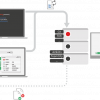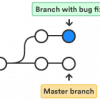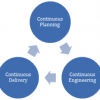Continuous Integration
Articles
 |
5 Tips to Take Your DevOps Pipeline Beyond the Basics The goal of a DevOps pipeline is to create a continuous workflow that includes the entire application lifecycle. But too often, people focus only on the tools and automating everything, not stopping to think whether their processes could further improve performance and efficiency. Let's look at some common challenges to continuous delivery and then learn five tips for refining your DevOps pipeline and taking it to the next level. |
|
 |
A Primer on Continuous Testing Continuous testing shortens feedback loops through automated testing that occurs throughout the development lifecycle—hence "continuous." Testing and QA become the responsibility of everyone working on the software, not just testers. Let's look at some proven practices from organizations that have used continuous testing effectively to realize tangible benefits. |
|
 |
Inverting the Test Automation Pyramid A growing company was tasked to develop a test automation program from scratch, change its coding practices, and build a continuous testing toolchain. Martin Ivison details how they did it, including realizing that implementing the traditional test pyramid wasn't going to work—it would have to be turned upside down. They found out that small is beautiful, cheap is good, and cultural change matters. |
|
 |
Who Should Set Up Continuous Integration for Automated Tests? If you want to trigger long-running, end-to-end automated tests, you must integrate the test execution system with the continuous integration system. But this job falls in a fuzzy area that meets at the nexus of feature development, test automation development, quality assurance, and build and release engineering. Here's how to decide who should be responsible for the setup. |
|
 |
5 Key Factors to Achieve Agile Testing in DevOps Part of the path to DevOps requires adoption of agile methodologies. What does it mean for testing when you switch from the traditional waterfall model, with a few long release cycles per year, to the agile model, with changes occurring every two weeks? Here are five key factors to achieve the agile software testing necessary in DevOps. |
|
 |
Picking the Right Branch-Merge Strategy A good branch-merge strategy facilitates processes among multiple developers and is the basis for any well-functioning DevOps pipeline that uses continuous integration. Let’s explore branching strategies, merging strategies, and how you can put them together in a way that’s right for your team in order to bring quality features to production faster. |
|
 |
Why You Need Continuous Testing in DevOps DevOps is more than adopting the right set of tools; it's a cultural shift that incorporates testing at each stage of the agile project lifecycle. Continuous testing is key to unlocking this culture change because it weaves testing activities into every part of the software design, development, and deployment processes, which helps everyone involved communicate more, collaborate better, and innovate faster. |
|
 |
5 Ways to Optimize Tests for Continuous Integration Many teams have existing automated test suites that are not included in a continuous integration program. Maybe the tests take too long to execute, or they are not reliable enough to give accurate results. Here’s how to assess your test suites in terms of value added and time to execute, along with five proven strategies to optimize those suites for CI. |
|
 |
Focus on Agile Engineering Methods in Your Digital Transformation Organizations undergoing a digital transformation must adopt new and meaningful ways of working. For a successful transformation, in addition to agile processes, teams must also leverage agile engineering techniques and models. Continuous focus on agile engineering principles will provide a solid ground for teams to enhance their agility and deliver better software, faster. |
|
 |
The Pros and Cons of a Serverless DevOps Solution The dream of any product owner is fully customizable production software without the expense of the hardware it rests upon. While not completely free of infrastructure, serverless infrastructure significantly reduces overhead costs by abstracting away physical hosting, physical security, server maintenance, and OS patching. Here's what you need to know to decide if serverless infrastructure is right for you. |












